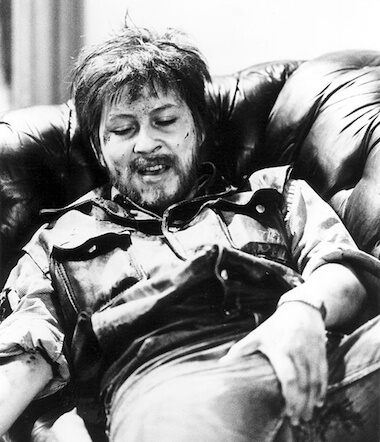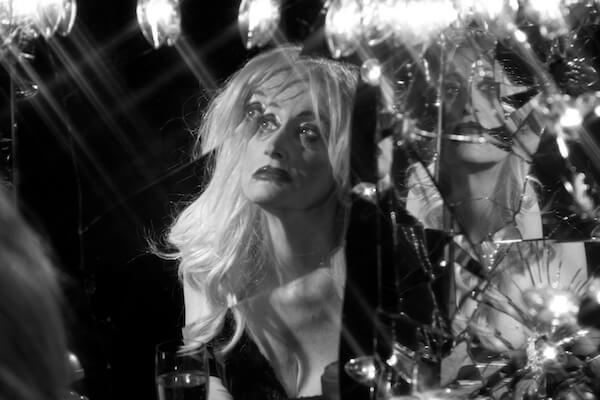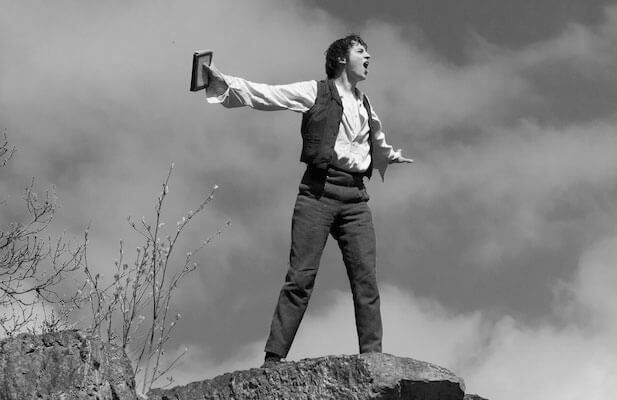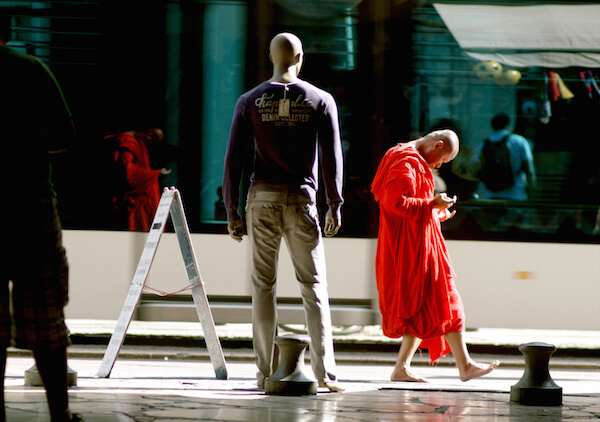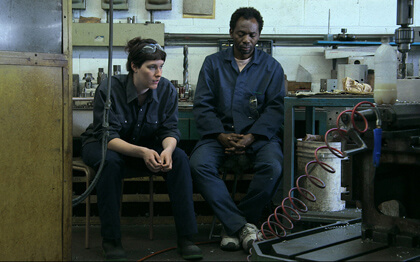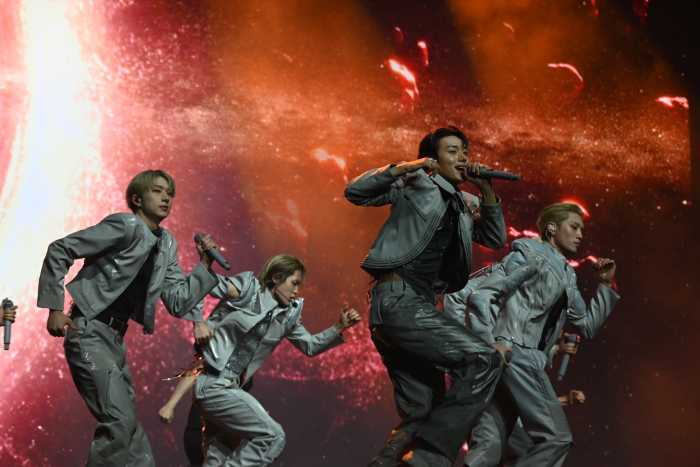Curt Goetz and Ossi Oswalda in Ernst Lubitsch’s 1918 “I Don’t Want to Be a Man.” | ANTHOLOGYFILMARCHIVES.ORG
The second of three anticipated programs at the Anthology Film Archives about cross-dressing and drag on screen features a number of films — Ernst Lubitsch’s “I Don’t Want to Be a Man” (Jun. 11, 5 p.m.; Jun. 17, 9 p.m.) and Barbara Streisand’s “Yentl” (Jun. 12, 8:45 p.m.; Jun. 16, 6:30 p.m.; Jun. 18, 8 p.m.) among them — where the characters dress in drag because it is part of the plot.
In the 1918 Lubitsch comedy, Ossi (Ossi Oswalda) is a young tomboy who smokes and drinks because she doesn’t want to be a proper young lady. But when her guardian, Dr. Kersten (Curt Goetz), tries to bring her into line, she defies him and dresses in a male garb to enjoy masculine privilege. But the advantages aren’t what she expects, and on her night out as a man she and Dr. Kersten have a drunken, romantic encounter that provides the film’s sexual comedy.
In contrast, several films, including “Die, Mommie, Die!” (Jun. 10, 8:30 p.m.; Jun. 18, 5:45 p.m.), “A Man Like Eva” (Jun. 9, 9:15 p.m.; Jun. 11, 6:30 p.m.; Jun. 17, 5 p.m.), and “Witch Hunt” (Jun. 13, 8:15 p.m.), feature actors playing opposite sex characters. John Epperson, aka Lypsinka, appears in “Witch Hunt” and helped curate the Anthology Film Archive series.
John Epperson, beloved as Lypsinka, curates a second Film Archives series
In a recent phone interview, Epperson explained that the Museum of Modern Art had originally contacted him about a cross-dressing film series, but it never came to fruition. Instead, MoMA is planning a major exhibition in October about Club 57, the St. Mark’s Place nightclub from the late 1970s and early ‘80s — where he had his first ever lip-synching job — and Epperson is curating films for that exhibit.
Meanwhile, he became involved with Anthology Film Archives on the cross-dressing and drag film series following a screening of the late Tom Rubnitz’s 1980s films.
“When Jed [Rapfogel, a programmer at Anthology Film Archives] started thinking about all the different films there are, he realized there were docs that need to be shown, and feature films, but some of them are about cross-dressing, someone pretending to be the opposite sex, while others have the actor playing the opposite sex,” Epperson explained.
Eva Mattes in Radu Gabrea’s 1984 “A Man Like Eva.” | ANTHOLOGYFILMARCHIVES.ORG
For examples of the latter type, Epperson contacted Charles Busch, his friend and fellow drag performer, and asked him what film he would want to be included in the series. Busch selected “Die, Mommie, Die!,” which has the actor/ writer playing the matriarch of a dysfunctional family involved in a murder-revenge plot.
“Die, Mommie, Die!” asks viewers to take Busch seriously as a female character and laugh with him, not at him. While it has long been the case that men in drag are seen as comical, and women in drag are seen as alluring, films like “Die, Mommie, Die!,” “A Man Like Eva,” and “Witch Hunt” dispel that myth.
Epperson observed, “It’s this ridiculous, old, tired patriarchy that we are still fucking stuck with that says a man in a dress is funny and a woman in men’s clothes is sexy. It’s a little bit of misogyny.”
“A Man Like Eva,” is Radu Gabrea’s remarkable 1984 film starring Eva Mattes as EVA, a fictional version of bisexual filmmaker Rainer Werner Fassbinder. On the set of a film, EVA controls and seduces the actors Gudrun (Lisa Kreuzer) and Walter (Werner Stocker), without much consideration for anyone’s feelings — including EVA’s ex-lover Ali (Charles M. Huber). Mattes gives a dynamic performance, and is entirely credible and convincing as EVA. The actress worked with Fassbinder on several films, but plays her late mentor credibly; it is not stunt casting.
Neither is Epperson’s canny performance in “Witch Hunt,” a fantastic mystery that was ahead of its time when director Paul Schrader made it for HBO in 1994. In the film, set in the 1950s, Detective H. Phillip Lovecraft (Dennis Hopper) is investigating the death of a Hollywood executive that was caused by magic. His trail leads him to Vivian Dart (Epperson), who operates a brothel out of the famous Ennis House in Los Feliz.
Epperson gets to lip-synch “I Put a Spell On You,” and the performer recalls Schrader saying that the scene “wasn’t about gender or cross-dressing. What [Schrader] liked about this scene is that the voice of the blackest woman who ever lived [Nina Simone] is coming out of the mouth of the whitest woman who ever lived. He never said anything to me about what he was trying to do or say about gender by having a man play Vivian. Maybe it didn’t matter to him? He wanted this unusual person to play a witch who was also the madam of a whorehouse. Maybe he had no intention at all?”
At Anthology’s June 13 screening of “Witch Hunt” in 35MM, Epperson will be on hand to recount stories about the production. He thinks the film is “more timely than ever now that our president is the protégé of Roy Cohn.”
He continued, “A lot of people don’t know the film, but if the term cult film still exists, ‘Witch Hunt’ would be in that. At the time it didn’t get good reviews, but I thought there are people who are going to rediscover this film and think it was amazing.”
CROSS-DRESSING AND DRAG ON SCREEN | Anthology Film Archives, 32 Second Ave. at Second. St. | Jun. 9-18 | anthologyfilmarchives.org

